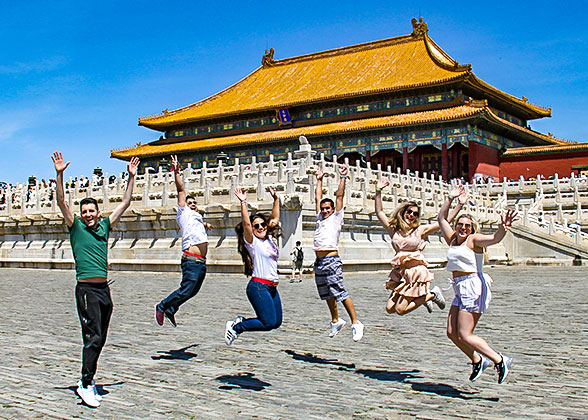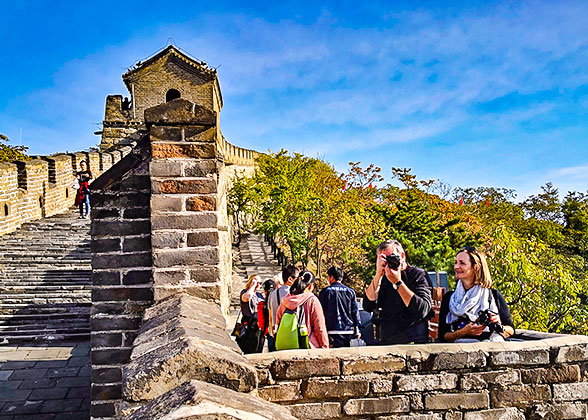What is the best time to visit the Great Wall of China?
The prime time to visit the Great Wall is autumn, specifically September and October, closely followed by spring in April and May. These periods offer warm, pleasant weather and the Great Wall’s natural landscape at its most stunning. Additionally, these periods allow visitors to bypass the peak tourist season, making them ideal for a memorable trip.
In April and May, the temperature at the Great Wall is perfectly pleasant, neither overly hot nor chilly, ensuring maximum comfort for travelers. April marks the blooming season at the Great Wall, where the structure is nestled amid a sea of flowers, creating an incredibly romantic ambiance. As the flower petals gradually fade in May, lush green foliage takes center stage, presenting a fresh and vibrant scene.
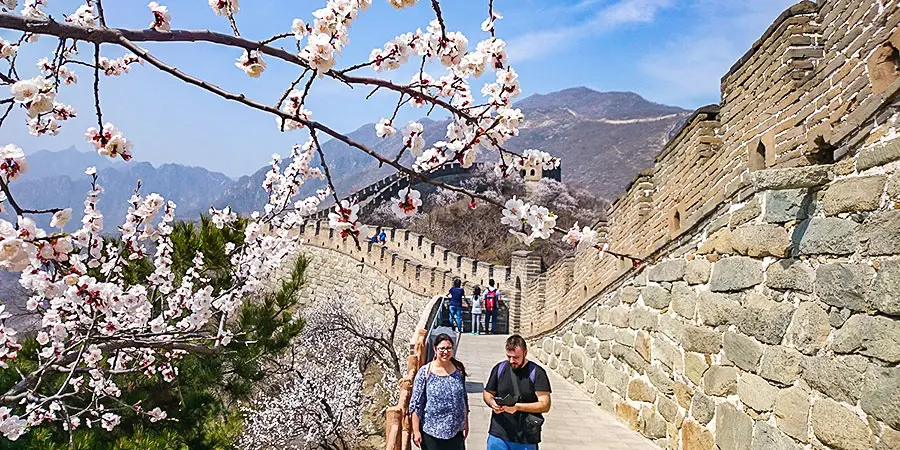 |
| Great Wall Decorated by Spring Flowers |
The Great Wall in September and October typically enjoys mild weather, as the scorching heat of summer gradually fades, replaced by gentle breezes. This period coincides with the end of China's summer vacation for students, resulting in fewer tourists. Additionally, maple leaves begin to turn red in late September, reaching their most vibrant and fiery hues by October. The pleasant climate, combined with breathtaking autumn scenery, makes this the ideal time to visit the Great Wall.
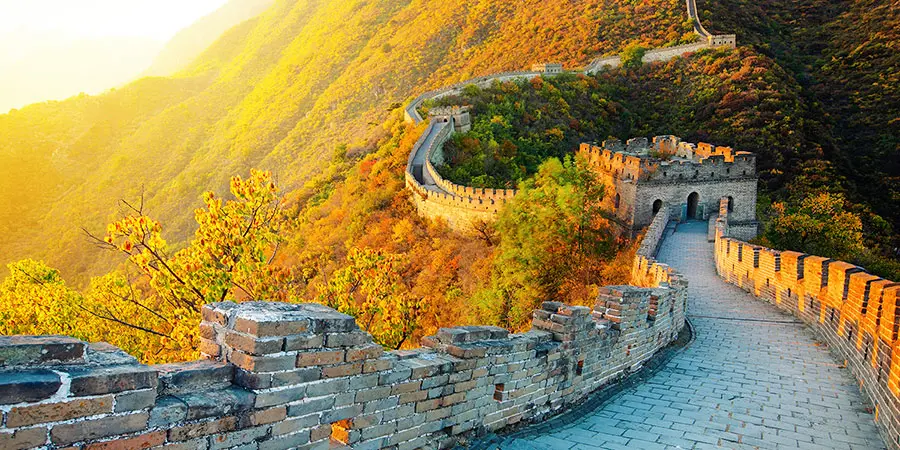 |
| Great Wall in Colorful Autumn |
Best Visiting Time Slots for the Great Wall of China
These two sections draw far more tourists than other parts of the Great Wall. For a more enjoyable travel experience, an afternoon visit is recommended. The round trip from the city center takes roughly three hours, and exploring the section itself takes about two to three hours, totaling approximately five to six hours. Thus, you can depart the city center between 10:00 and 11:00, arrive around noon, have a light lunch, and then embark on your hike.
Morning is undoubtedly the ideal time to visit the Jinshanling and Gubeikou sections. Both are distant from the Beijing center: a bus ride to Jinshanling takes about 2.5 to 3 hours, while reaching Gubeikou takes 3.5 to 4 hours. A full hike of Jinshanling takes around four hours, and Gubeikou requires at least three hours. Therefore, if you’re planning a day trip, setting off early in the morning is essential.
Simatai is approximately a 3-hour drive from downtown Beijing. Tourists typically combine a visit to Simatai with the
Gubei Water Town at its foot, hiking the Great Wall at night while savoring the water town’s night views. For this reason, an overnight stay is recommended, and a two-day tour is an excellent option.
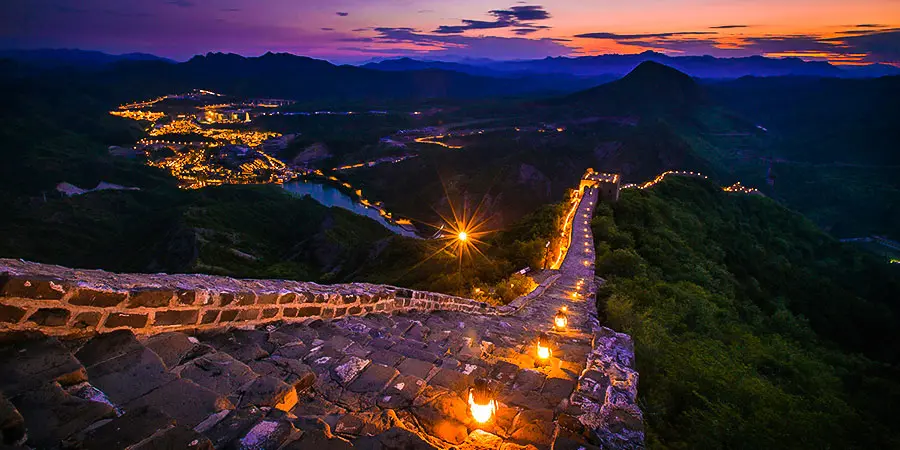 |
| Simatai at Night |
Times to Avoid When Visiting the Great Wall
1. July and August - Hot, rainy and crowded
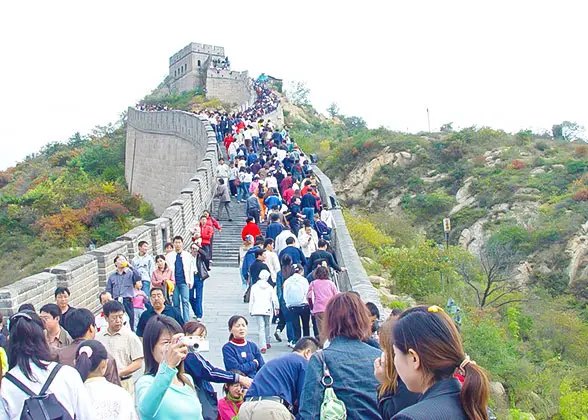 |
| Badaling during Weekends |
July and August coincide with the rainy season in the Great Wall area, with rain falling on roughly half of the days in a month. Furthermore, the weather is hot and humid during this period. On rain-free days, daytime highs exceed 30℃ (86℉), and on some days, they can soar above 35℃ (95℉). Compounding these issues, July and August are China’s summer vacation months, when large numbers of parents take their children to visit the Great Wall, resulting in extreme overcrowding. For such reasons, these two months are the least recommended for a visit.
2. December to February - Cold, Windy
Winter in the Great Wall area brings relatively low temperatures, with average minimums dropping below -10℃ (14℉) and average maximums hovering near freezing. The season is also characterized by harsh northwest winds, which can cause significant discomfort for tourists. To stay warm, visitors must bundle up in thick clothing and various cold-proof gear, which restricts movement and makes hiking cumbersome. Vegetation in the area withers in winter, leaving the scenery relatively dull and lacking the vitality and color seen in other seasons. Additionally, snowfall and ice make the roads slippery, increasing the risk of accidents while climbing.
3. Weekends and Holidays - Extremely Crowded
Weekends see a sharp rise in the number of tourists, as they are peak visiting times for residents of nearby cities. Roads leading to the Great Wall are often plagued by traffic jams. Congestion becomes even more severe during major Chinese holidays, such as the May Day holiday (May 1 to 5) and the
National Day holiday (October 1 to 7), which are peak periods for domestic tourism. At popular sections like Badaling, crowds can become so dense that visitors are packed tightly together.
Great Wall of China Weather by Month
 See also:
See also:
Badaling Weather
Mutianyu Weather
6 Best Places to See Great Wall of China
8 Unusual Things to Do at the Great Wall of China
- Last updated on Sep. 23, 2025 by Sherry Xia -




![]() See also:
See also:
